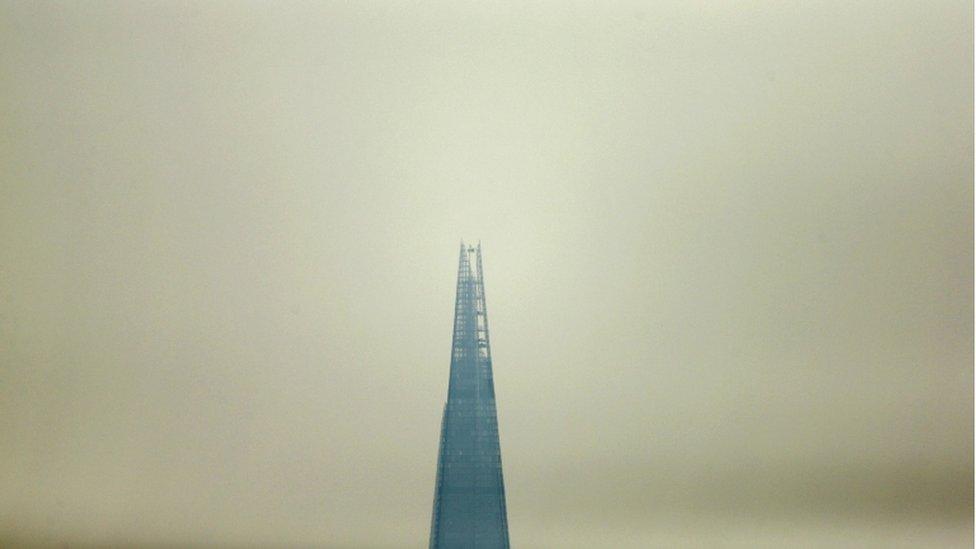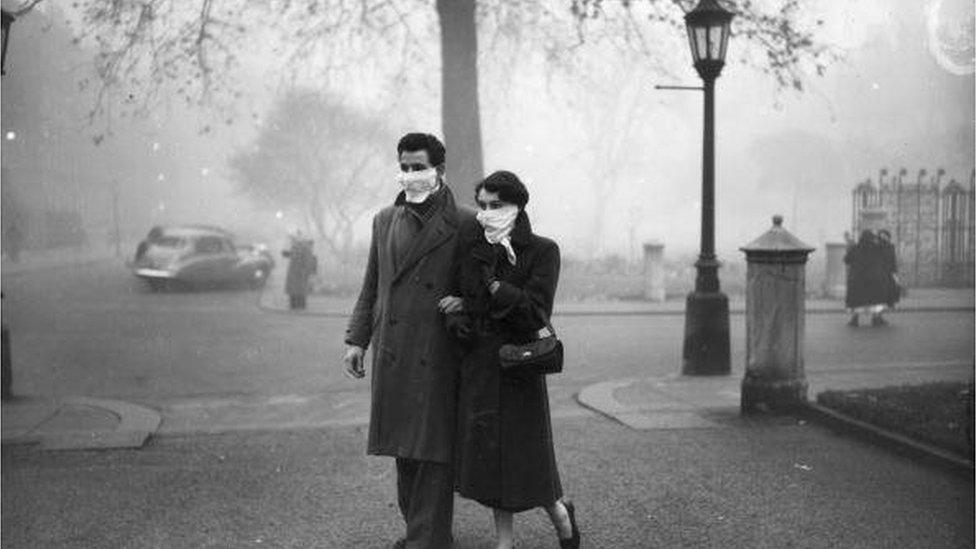Pollution in London from wood burning on the rise
- Published
- comments

Pollution from wood burners are on the rise
If there was one surprise from the recent very high pollution levels, it was the fact that according to King's College some of the pollution was due to "unusually high levels of domestic wood burning".
This is not to underestimate the contribution of traffic emissions but wood burning, according to the experts, was making up half of the pollution readings at some monitors at some sites - all exacerbated by low winds not blowing away pollutants.
So isn't London a clean air zone which is meant to prevent their use? Well, yes.
'Exempt appliances'
The Clean Air Act, external means local councils can set up Smoke Control Areas where only smokeless fuels should be burnt, or wood is burnt only in "exempt appliances".
Homeowners can be fined £1,000, although I haven't found any records of people being fined in London.
Enforcement may be an issue, as it is not usually a priority for London's councils.
But wood stoves are becoming more popular and it seems the emissions from wood burning have increased.

So far mayoral policies have been aimed at cleaning up traffic in particular NO2
The air quality campaigners Clean Air in London, external say: "Solid fuels are considerably more polluting that natural gas (the main heating fuel used in London).
"In 2009 coal and wood burning in the home was thought to be responsible for 12% of UK PM10 emissions [source - National Atmospheric Emissions Inventory], whilst research by King's College London suggests around 12% of the PM10 in London's air during winter 2010 arose from wood burning."
That is quite a leap from 12% to 50% in the levels of wood burning on Monday.
Also it is worth noting that even the exempt appliances are not completely clean.

When most homes were warmed by coal fires Londoners found themselves often needing to wear smog masks
In fact, according to a presentation by The Danish Ecological Council which has looked into the use of wooden stoves: "Just 16,000 wood stoves in Copenhagen (600,000 inhabitants) emit as much fine-particles pollution in one winter, as all traffic emit within one year."
It also says: "New low-emission stoves cause much higher emissions (above 500.000 part/cm3) than new trucks with particulate filters (below 1.000 part/cm3)."
So far mayoral policies have been aimed at cleaning up traffic in particular NO2, but perhaps some attention should focus on the burning of wood in homes.
Simon Birkett from Clean Air In London says: "We need the mayor to educate people and local authorities to enforce the existing Clean Air Act while it's updated."
ClientEarth, external's air quality lawyer Anna Heslop said: "When pollution is this high then we need to tackle all major sources of it. The biggest cause of chronic and dangerous air pollution all year round comes from diesel vehicles.
"Wood burners can contribute to the most serious smog episodes which we see in winter, like those which Londoners are experiencing at the moment.
"During the worst episodes of very high pollution, people need to be advised not just on the levels but on how they can avoid adding to the pollution, and that means everything from using cleaner transport options and leaving their cars at home to avoiding using wood burners."
- Published23 January 2017

- Published24 January 2017
